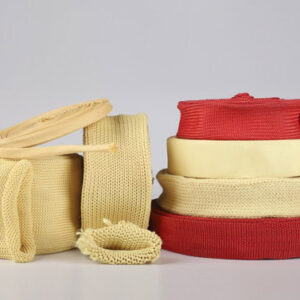In an era where safety, comfort, and durability converge, UHMWPE cut-resistant fabric (Ultra High Molecular Weight Polyethylene) is gaining increasing attention—not just in industrial applications, but also in consumer-facing wearable products. Traditionally reserved for high-risk environments like military gear or PPE, this material is now making its way into casual apparel, workwear, bags, and even fashion.
But the question remains: Can UHMWPE fabric truly be used in everyday wearables? And if so, what are the challenges, opportunities, and implications of such a shift?
What Is UHMWPE Cut-Resistant Fabric?
UHMWPE (Ultra High Molecular Weight Polyethylene) is a type of thermoplastic with long molecular chains that provide extraordinary strength-to-weight ratio. It’s 10 times stronger than steel on a weight basis and lighter than water. In textile form, UHMWPE fabric is woven or laminated into highly durable sheets that resist cutting, abrasion, chemicals, and even some ballistic threats. As a cut-resistant fabric, UHMWPE is ideal for protecting the wearer from sharp tools, blades, or broken glass. It’s widely used in gloves, stab-resistant vests, police gear, and industrial safety clothing. Today, leading custom UHMWPE fabric suppliers are developing new blends that combine performance with comfort—opening the door for integration into more accessible wearables.
Where Could UHMWPE Be Used in Everyday Clothing?
While the fabric was once too rigid or expensive for casual use, newer textile technologies have enabled cut-resistant fabric UHMWPE to be more flexible, breathable, and lighter. Here are some promising applications:
1. Urban and Tactical Streetwear
Street fashion brands are increasingly incorporating UHMWPE cut-resistant fabric into jackets, hoodies, and pants to offer both protection and style. These items appeal to urban users looking for enhanced safety without sacrificing design.
2. Motorcycle Apparel
Riders often face the risk of abrasion in case of accidents. Many brands now blend UHMWPE fabric into jeans or underlayers to improve resistance while maintaining denim aesthetics.
3. Anti-Theft Backpacks and Bags
In everyday commuting and travel, cut-proof bags made with cut-resistant fabric UHMWPE provide peace of mind against slash-and-run thefts.
4. Workwear and DIY Clothing
For carpenters, glass workers, or electricians working outside industrial zones, garments made from custom UHMWPE fabric provide essential protection without the bulk of traditional PPE.
5. Protective Sports Gear
In fencing, mountain biking, or even skateboarding, lightweight UHMWPE layers under sports uniforms can protect from lacerations or unexpected impacts.
🧵 Challenges in Everyday Application
Despite its potential, UHMWPE fabric isn’t a plug-and-play solution. Integrating this material into everyday wearables faces several hurdles:
⚠️ 1. Comfort and Flexibility
Early-generation UHMWPE cut-resistant fabric was stiff and rough, unsuitable for daily wear. While custom suppliers have improved textile blending, comfort still lags behind cotton, nylon, or polyester.
⚠️ 2. Breathability
For all-day wear, heat and moisture control are critical. Some UHMWPE fabrics still trap body heat, which can reduce usability in hot climates.
⚠️ 3. Cost
Compared to conventional textiles, UHMWPE is more expensive to produce. Only when mass-adopted or when blended intelligently with cheaper fibers (like aramid or polyester) can the cost be reduced for everyday use.
⚠️ 4. Aesthetics
As fashion plays a major role in consumer decisions, the bulky or synthetic appearance of cut-resistant fabric UHMWPE may limit its appeal unless paired with stylish design.
🧬 Innovations Driving Adoption
To address these issues, top custom UHMWPE fabric suppliers are engineering composite fabrics that blend UHMWPE with:
-
Spandex for stretch
-
Cotton for comfort
-
Polyester for affordability and colorability
-
Nylon for water resistance
📊 UHMWPE vs Other Fabrics: Quick Comparison
| Property | Cotton | Nylon | Kevlar | UHMWPE Fabric |
|---|---|---|---|---|
| Cut Resistance | ❌ Low | ❌ Low | ✅ High | ⭐ Excellent |
| Weight | ⭐ Light | ✅ Light | ⚠️ Medium | ⭐ Very Light |
| Comfort | ⭐ High | ✅ Medium | ⚠️ Low | ✅ Improving |
| Breathability | ⭐ High | ✅ Medium | ⚠️ Low | ⚠️ Variable |
| Cost | ⭐ Low | ✅ Medium | ⚠️ High | 💰 High |
| UV Resistance | ⚠️ Low | ✅ Medium | ⚠️ Low | ✅ Good |
| Washability | ✅ Good | ✅ Good | ⚠️ Limited | ✅ Good |
🏭 What to Look for in a UHMWPE Fabric Supplier
When sourcing cut-resistant fabric UHMWPE for consumer or commercial wearable use, it’s critical to partner with an experienced, custom UHMWPE fabric supplier like Sovetl. A good supplier should offer:
-
Tailored fabric specifications (GSM, color, coating)
-
Performance certifications (EN388, ANSI A6+)
-
Blended textile design expertise
-
Flexible MOQ for prototyping
-
Consistent quality control and delivery timelines
Final Thoughts: Is UHMWPE the Future of Safe Everyday Clothing?
The short answer is: Yes—if applied thoughtfully. UHMWPE cut-resistant fabric is no longer limited to body armor or industrial gloves. With the right fabric engineering and supplier collaboration, it can be part of everyday protection—from riding a bike in city traffic to carrying a backpack through a crowded subway. As consumers become more safety-conscious and urban environments pose more daily risks, cut-resistant clothing could become the new normal—just like anti-theft bags or waterproof sneakers once did.
For brands and designers, now is the time to explore partnerships with custom UHMWPE fabric suppliers like Sovetl, and take part in a new generation of functional, protective, and wearable textiles.




